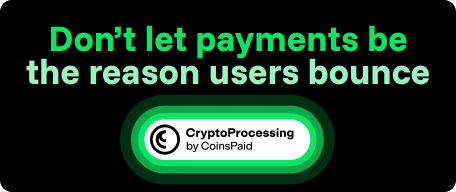What Comes After Stablecoins: The Rise of Tokenized Cash

Stablecoins brought dollars onto blockchains — unlocking 24/7 payments, DeFi access, and faster settlement without banks. But tougher regulations and institutional demands are exposing their limits. The market is now shifting toward something more robust: tokenized cash.
Issued by banks, fintechs, and government institutions, these fiat-backed assets are fully compliant and settle in real time on blockchain rails. In this article, I’ll break down why the shift is happening, what infrastructure it needs, and what its implications are for Defi, TradFi, and global finance.
Stablecoins are Showing Limits
Stablecoins solved an early challenge: volatility. Pegged to the dollar, they created liquid, reliable rails for 24/7 payments, DeFi lending, and cross-border payments. They became the backbone of crypto trading. From 2019 to now, the market has grown from $6 billion to over $100 billion. Tether alone accounts for more than half of that, thanks to its dominant liquidity across global exchanges.
But cracks are starting to show:
- Reserves are murky. Tether’s backing has long raised questions. Even USDC, considered more compliant, depends on centralized issuers holding reserves in traditional banks.
- Liquidity is fragmented. Multiple stablecoins — USDT, USDC, BUSD, FDUSD — split liquidity and create pricing inconsistencies.
- Regulation is tightening. In 2021, a U.S. interagency report flagged stablecoins as a systemic risk, calling for federal oversight and clearer rules.
As noted in a 2021 report by the U.S. Department of the Treasury, “the rapid growth of stablecoins increases the urgency… A regulatory framework that supports confidence in payment stablecoins could increase the likelihood of stablecoins supporting beneficial payment options.”
These growing pains are driving momentum toward something more integrated and more regulated.
What is Tokenized Cash?

Diagram showing tokenized cash recorded on a blockchain ledger and transferred between entities.
Tokenized cash is fiat currency issued directly on-chain by regulated entities — banks, fintechs, or government institutions. Unlike stablecoins, these assets are not just backed by dollars — they are dollars.
Each token represents a direct claim on deposits or shares in a regulated fund. Fully compliant and digitally native, they combine the programmability and speed of blockchain with the legal structure of traditional finance.
“Tokenized cash… is not merely backed by fiat; it is fully redeemable at par and represents an actual claim on a bank deposit.” — PwC & Loopring (2019), Emergence of Stable Value Coins and A Trust Framework for Fiat-Backed Versions
Take BENJI, for example — Franklin Templeton’s tokenized U.S. Government Money Fund. It runs natively on public blockchains like Ethereum and Solana, distributes yield daily, and stays fully compliant with SEC rules. Each BENJI token represents a share of the fund, updated and settled through smart contracts.
This level of integration with traditional finance is what makes tokenized cash so powerful. These tokens don’t need to sidestep regulation. They’re built for it.
Why the Shift is Happening Fast
Regulation is catching up
The U.S. Congress is moving forward with bills like the GENIUS and STABLE Act to tighten control over stablecoins. Key proposals include:
- Reserve transparency
- Fast redemption
- Federal licensing for issuers
Under these frameworks, algorithmic stablecoins like TerraUSD would be banned outright. Big Tech firms like Facebook or Google would be blocked from issuing digital money. Only regulated banks, trust companies, and similar entities would be allowed to operate.
Institutions are already leaning in
Major financial players aren’t waiting on the sidelines — they’re already deploying tokenized cash solutions to bridge the gap between traditional markets and blockchain infrastructure.
- JPM Coin has settled billions in corporate transactions
- Franklin Templeton’s BENJI is now live on Ethereum, Solana, and Base
- BlackRock, Hashnote, and others are launching similar tokenized treasury products
Tokenized money funds are emerging as a low-risk, yield-bearing bridge between TradFi and DeFi.
The BENJI token combines the stability of a registered money-market fund with the added benefit of accruing yield, unlike traditional stablecoins.
Central banks around the world are piloting digital currencies
More than 100 countries are exploring CBDCs in some form. Even if most projects remain wholesale-only, they are eager for fiat money that can move and settle natively on blockchain infrastructure.
DeFi is getting more institutional
Protocols are becoming more permissioned. Institutions want in — but only if the assets meet compliance, custody, and audit requirements. Tokenized fiat clears that bar. Stablecoins, with their regulatory ambiguity, don’t.
To support this shift, a new layer of infrastructure is emerging. Tokenized cash demands more than a stablecoin wrapper. It needs a full-stack upgrade.
What Infrastructure Does It Need?
Tokenized cash isn’t just a financial product — it’s a new operating system for money. To function at scale, it requires more than regulatory clarity and institutional support. It needs a robust, interoperable, and compliant infrastructure stack purpose-built for digital fiat. This includes identity-linked wallets, cross-chain operability, privacy tools, and seamless integration across DeFi and TradFi rails.
- Identity-aware wallets. In a permissioned system, wallets must link to real-world identities, enabling KYC and AML checks directly through smart contracts. This keeps issuers compliant without relying on third-party intermediaries.
- Interoperability. Tokenized cash won’t live on one chain. Banks and issuers will operate across Ethereum, Solana, Base, and others. Connecting these networks securely requires trust-minimized protocols with institutional-grade guarantees. Projects like Chainlink’s CCIP and the Regulated Liability Network are already working on it.
- Privacy, redefined. Full transparency can clash with user confidentiality. Solutions like zero-knowledge proofs and selective disclosure tools can help balance auditability with discretion. That means regulators see what they need, without putting every transaction on blast.
- Seamless utility. For tokenized cash to matter, it must be usable. That means exchanges, wallets, and DeFi protocols need to support these assets out of the box. Real-time liquidity, instant redemption, and seamless fiat onramps must become the standard. Otherwise, tokenized fiat will remain a niche solution for institutional treasuries, instead of a foundational layer for the entire internet economy.
Why It Matters
The upside is massive:
- In DeFi, tokenized cash can reduce risk, unlock new capital, and power real-world asset protocols.
- In TradFi, it powers 24/7 settlement, smart payroll, and more efficient treasury operations.
- For governments, it means better visibility into money flows, while reducing fraud and tightening monetary policy tools.
Tokenized cash isn’t a competitor to stablecoins. It’s the next step. Stablecoins helped crypto evolve. Tokenized fiat is what happens when crypto and finance finally meet in the middle.
But perhaps the most profound impact lies in how tokenized cash reconfigures the entire crypto market structure:
- Liquidity consolidation. As tokenized fiat gains traction, fragmented stablecoin liquidity may consolidate around fewer, more credible instruments backed by regulated issuers.
- New market primitives. Protocols can be built around interest-bearing, risk-free collateral (e.g., BENJI tokens or tokenized T-bills), redefining borrowing, derivatives, and liquidity provisioning mechanisms.
- Asset onboarding at scale. Tokenized cash can serve as the anchor asset for tokenizing equities, credit, real estate, and sovereign bonds, bringing trillions of dollars worth of assets on-chain, with fiat seamlessly woven into the settlement layer.
- Mainstream adoption catalyst. With trusted issuers and legal clarity, tokenized cash lowers the barrier for mainstream financial institutions to engage with blockchain networks, accelerating adoption without regulatory arbitrage.
Tokenized cash isn’t a competitor to stablecoins. It’s the next step. Stablecoins helped crypto evolve. Tokenized fiat is what happens when crypto and finance finally meet in the middle.
In short, tokenized fiat isn’t just where crypto and finance meet — it’s where they merge.











